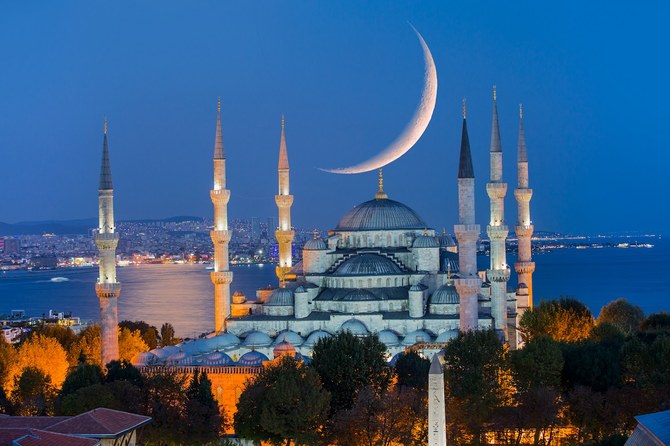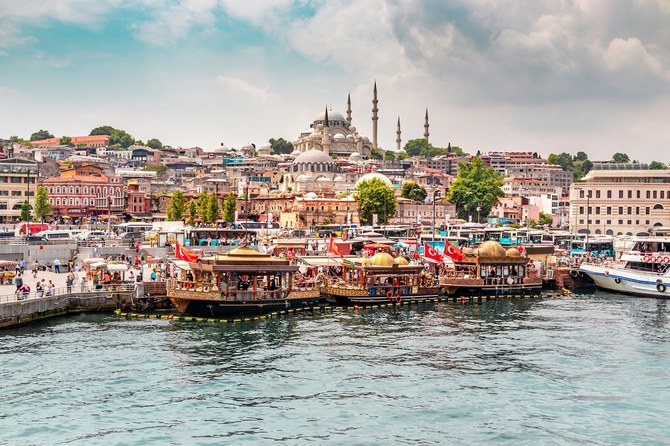DUBAI: Although the bulk of Istanbul’s historic sites lie across the Golden Horn in Sultanahmet, there’s something magnetic about Beyoğlu. It personifies Istanbul’s confidence and economic energy, is at the heart of the city’s most exciting nightlife, and has acted as a battleground for Istanbul’s modern cultural identity.
It is also home to the city’s main commercial artery — Istiklal Avenue, a wide pedestrianized thoroughfare that stretches from the steep cobbled gradients of Galata to the vast open space of Taksim Square. For most of the year it is populated by an endless sea of people either wrapped up against the onset of winter or basking in the glory of spring and summer.
Beyoğlu is where you’ll find much that relates to the world of art and culture. Orhan Pamuk, the Turkish Nobel laureate and author of novels including “My Name Is Red” and “Snow,” lives and breathes the district’s neighborhoods. You can follow in his footsteps if you like, tracing your way from Sahaflar Carsisi, the used-book bazaar that he used to frequent as a child, to the The Museum of Innocence and its quirky minutiae of 20th-century Istanbul life. The latter was created by the author as a companion to his novel of the same name and is located in a 19th-century timber house in Cukurcuma.
Then there’s the food. Take Ficcin as an example. Spread across a number of venues on either side of Kallavi Street, this wonderful restaurant serves both classic Turkish cuisine and Circassian specialties. That means kofta, artichokes, grilled chicken and an aubergine salad with yoghurt and garlic, and specials such as manti (Turkish dumplings) and the dish that the restaurant is named after — a meat-filled savory pastry baked like a pizza.
If you’re looking to stay in the Beyoğlu area, not far from Ficcin is the Pera Palace Hotel, a late 19th-century masterpiece designed by the French-Ottoman architect Alexandre Vallaury. Renovated and refurbished just under a decade ago, its grand, high-ceilinged interiors are awash with dark reds, velvet and gold, while the colors of the lobby, tea lounge and library are deeper and richer than when Agatha Christie and a cavalcade of early 20th-century celebrities made it their hotel of choice.
A short stroll from the Pera Palace is the former medieval Genoese citadel of Galata, now known as Karaköy and lying at the southern end of Istiklal. Its central, striking feature is the Galata Tower, built by the Genoese in 1348 and a reminder of the wonder of Istanbul’s pre-Ottoman past. Karaköy’s steep cobblestone streets are sprinkled generously with cafés and boutiques selling everything from Orientalist soap tins to Turkish towels and there’s a relaxed, laid-back kind of vibe.
From Galata you can walk down to the shores of the Golden Horn, crossing the Galata Bridge towards Sultanahmet and the district of Fatih (once the Byzantine city of Constantinople). It is here that you’ll realize the full impact of Istanbul’s allure. In peak holiday seasons it will be almost impossible to move within the maze of alleys that make up the Grand Bazaar, a colossal covered market that covers 64 streets and has 22 separate entrances. It’s easy to get lost, which is part of the appeal, but with up to half a million people visiting every day it can get extremely claustrophobic.
For a more sedate experience (although expect queues), Sultanahmet is a UNESCO world heritage site and home to both the Hagia Sophia and The Blue Mosque. At the latter you can sit beneath the continuous vaulted arcade that surrounds the mosque’s great courtyard, or marvel at the grandeur of its interiors, while the former’s magnificent giant dome and stunning mosaics remind you of Istanbul’s Byzantine past.
All of Sultanahmet’s main historic attractions are within easy walking distance of each other, including the Topkapi Palace, with its lavish courts and holy relics, and the underground delights of the Basilica Cistern. The sites are also within 10 minutes’ walk or so of the Ajwa Hotel Sultanahmet, a fully halal luxury boutique hotel that first opened just under two years ago.
If you find the time, head to Pandeli. First opened in 1901, the restaurant is reached via a steep set of stairs near the entrance to the Spice Bazaar and is defined as much by its shimmering blue iznik tiles as it is by its traditional Turkish food. Expect views of Eminonu Square and delights such as lamb stew served on a bed of mashed roasted aubergine.
One thing’s for sure, visitors to Istanbul will not be bored. The many delights of this city straddling two continents could keep anyone busy for months. As the French poet and politician Alphonse de Lamartine wrote in the 19th Century, “If one had but a single glance to give the world, one should gaze on Istanbul.”

























